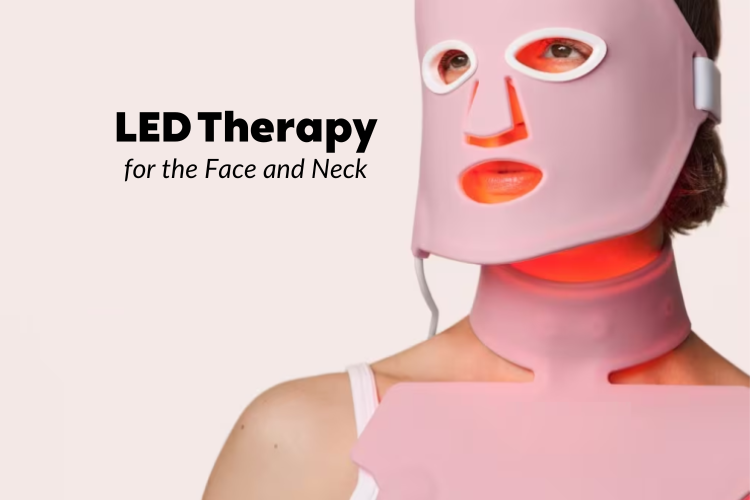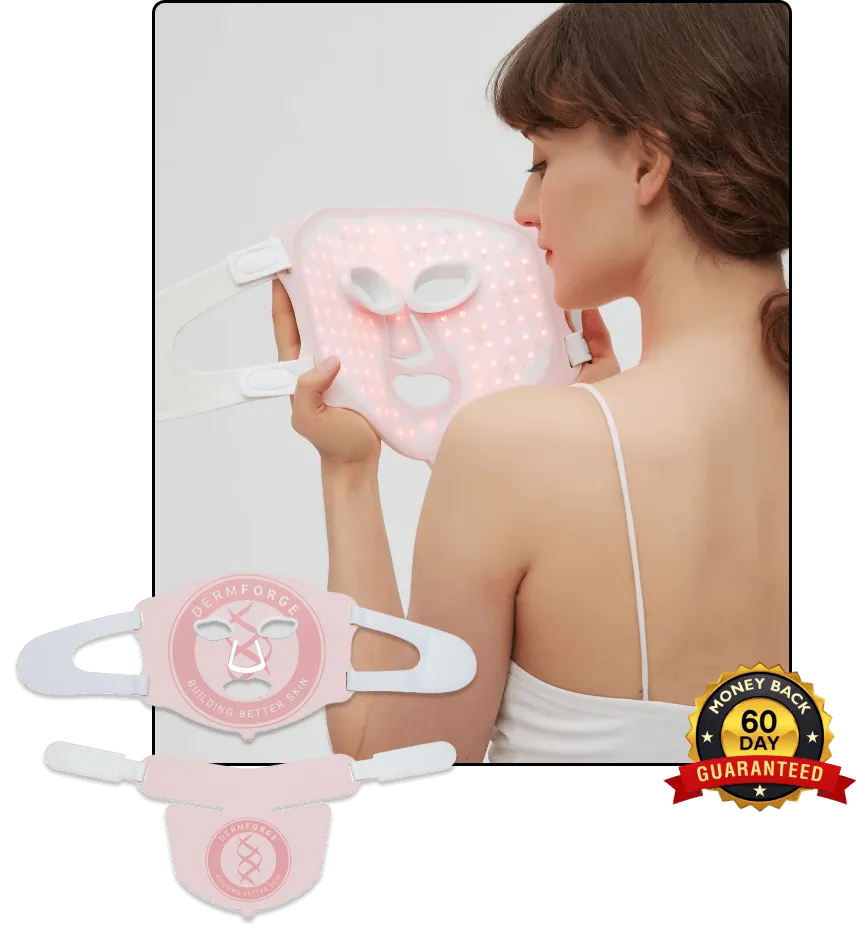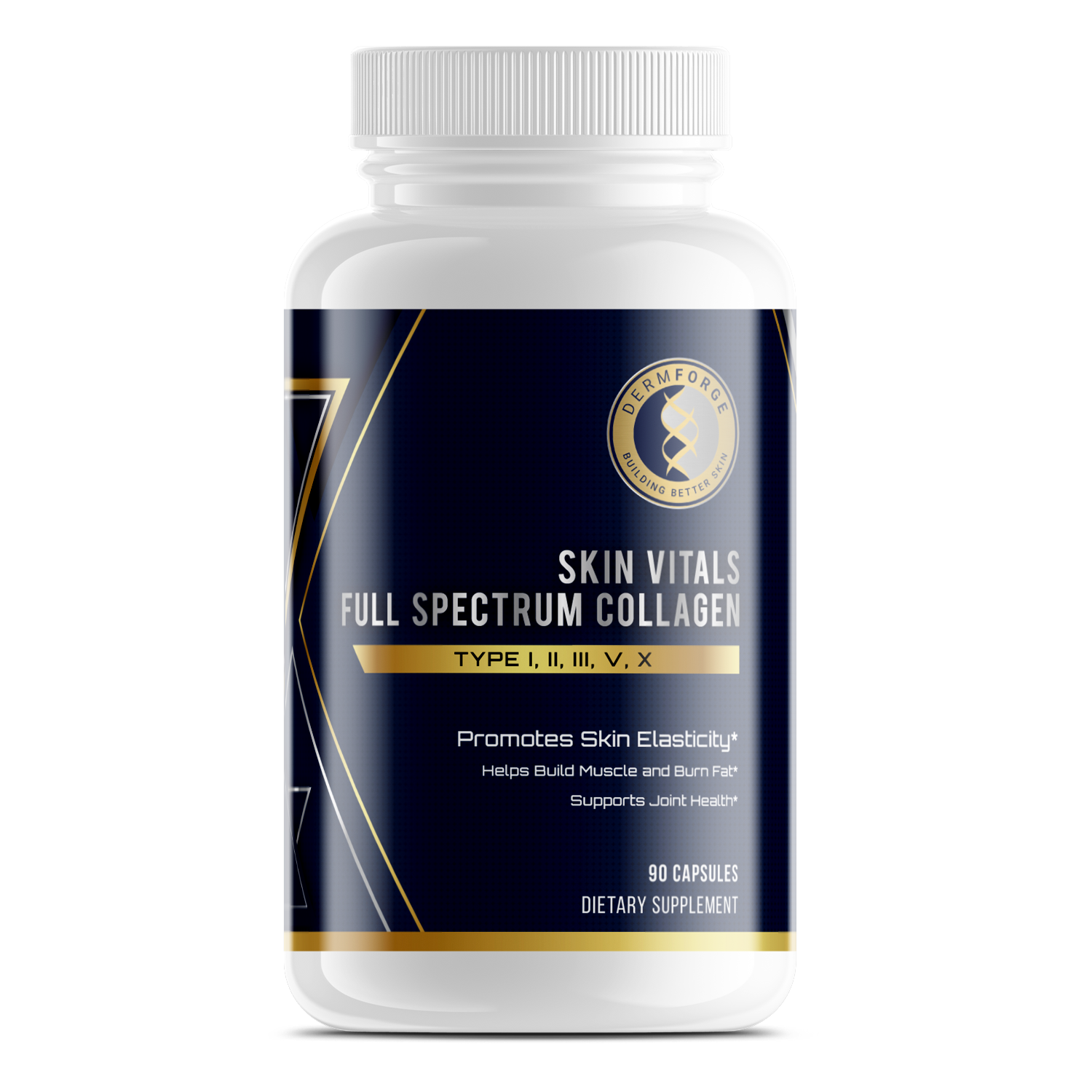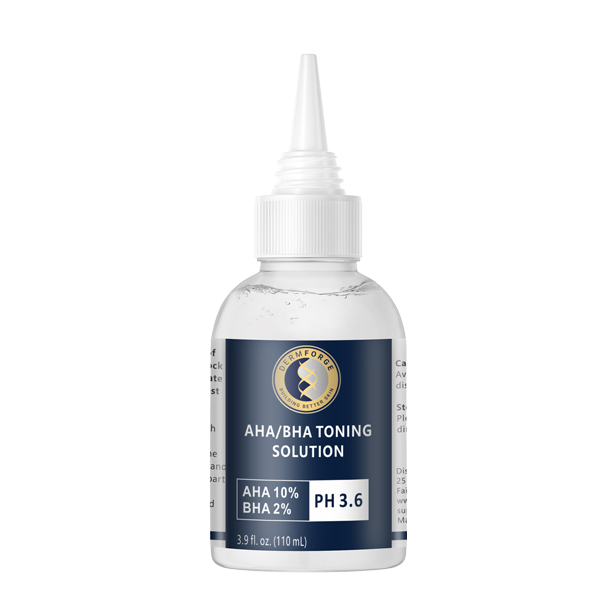LED Therapy for the face and neck has gained significant attention in skincare. This non-invasive treatment utilizes specific light wavelengths to address various skin concerns. By understanding how LED therapy works, you can make informed decisions about incorporating it into your skincare routine.
LED therapy employs different light wavelengths to penetrate the skin at varying depths, stimulating cellular activity. Red light, typically at 660 nm, reaches deeper layers, promoting collagen production and enhancing skin elasticity. This process helps reduce fine lines and wrinkles, leading to a more youthful appearance. Blue light, around 415 nm, targets the skin's surface, effectively eliminating acne-causing bacteria and reducing inflammation. Near-infrared light penetrates deepest, aiding in wound healing and tissue repair. By selecting the appropriate wavelength, LED therapy can address specific skin issues effectively.
Red light therapy is renowned for its anti-aging benefits. By stimulating collagen synthesis, it improves skin firmness and reduces wrinkles. Additionally, red light enhances blood circulation, delivering essential nutrients to skin cells and promoting overall skin health. Blue light therapy, on the other hand, is effective in treating acne. It destroys bacteria responsible for acne formation, leading to clearer skin. Near-infrared light supports tissue repair and reduces inflammation, benefiting those with sensitive or damaged skin. Combining these wavelengths in LED Therapy for the face and neck can provide comprehensive skin rejuvenation.
Understanding the science behind LED therapy allows you to tailor treatments to your skin's needs. Whether aiming to reduce wrinkles, combat acne, or promote healing, selecting the appropriate light wavelength is crucial. Consulting with a skincare professional can help determine the best approach, ensuring optimal results from LED therapy.
How LED Therapy Works: The Science Behind Light-Based Skincare
LED therapy uses specific light wavelengths to penetrate the skin, stimulating cellular activity and promoting skin health. Red, blue, and near-infrared lights each offer unique benefits for the face and neck.
Red light, typically at wavelengths around 630 to 700 nm, penetrates deeply into the skin. It stimulates fibroblasts to produce collagen, enhancing skin texture and reducing wrinkles. Additionally, red light has anti-inflammatory properties, aiding in skin rejuvenation.
Blue light, at approximately 415 nm, targets acne-causing bacteria on the skin's surface. It reduces oil production and has anti-inflammatory effects, making it effective against acne. Combining blue and red lights can enhance acne treatment by addressing both bacteria and inflammation.
Near-infrared light penetrates the deepest, reaching underlying tissues. It boosts cellular energy production, promoting healing and reducing inflammation. This wavelength supports overall skin health and complements other treatments.
By understanding these mechanisms, you can appreciate how LED therapy for the face and neck offers targeted, non-invasive skincare solutions.
Key Benefits of LED Therapy for Facial and Neck Skin
LED therapy offers several benefits for facial and neck skin, enhancing overall skin health. One key advantage is improved skin elasticity. Red LED light stimulates collagen production, a protein responsible for skin firmness. Increased collagen leads to firmer skin, reducing sagging and promoting a youthful appearance.
Additionally, LED therapy helps reduce wrinkles. By promoting collagen and elastin production, it smooths fine lines. Regular treatments can diminish the depth of wrinkles, resulting in smoother skin.
Moreover, LED therapy enhances healing. It accelerates tissue repair by increasing blood circulation and cellular regeneration. This makes it beneficial for healing acne scars and other blemishes.
Furthermore, LED therapy addresses hyperpigmentation. Specific wavelengths target melanocytes, the cells producing pigment, helping to even out skin tone and reduce dark spots.
In addition, blue LED light effectively combats acne. It targets acne-causing bacteria, reducing breakouts and preventing future ones. This leads to clearer skin over time.
Moreover, LED therapy reduces inflammation. It soothes irritated skin, making it beneficial for conditions like rosacea. This calming effect results in a more even complexion.
Incorporating LED therapy for the face and neck into your skincare routine can yield these benefits. Consistent use leads to noticeable improvements in skin health and appearance. Consulting with a skincare professional can help tailor treatments to your specific needs.
Red vs. Blue Light Therapy: What’s Best for Your Skin Type?
LED therapy utilizes specific light wavelengths to address various skin concerns. Red light, typically at 600–700 nm, penetrates the dermis, stimulating fibroblasts to enhance collagen and elastin production. This process improves skin elasticity and reduces wrinkles. Blue light therapy, on the other hand, targets acne by eliminating bacteria responsible for breakouts. Studies have shown that blue light can reduce acne lesions, leading to clearer skin. Combining red and blue light therapies can provide comprehensive skin benefits, addressing both aging signs and acne issues.
When considering LED Therapy for the face and neck, it's essential to choose the appropriate light based on your skin's needs. Red light is ideal for those aiming to reduce fine lines and boost collagen, enhancing overall skin texture. Conversely, blue light is suitable for individuals dealing with acne, as it effectively targets acne-causing bacteria. Understanding these distinctions ensures you select the most effective treatment for your specific skin concerns.
How to Incorporate LED Therapy into Your Skincare Routine
Integrating LED therapy into your skincare routine can enhance your skin's health and appearance. To achieve optimal results, it's essential to understand how to incorporate LED therapy effectively.
Frequency of Use
Consistency is key with LED therapy. Experts recommend using LED devices at least three to five times per week over a four to five-week period. Each session should last between 10 to 20 minutes, depending on the device and your skin concerns. For instance, anti-aging treatments may require 10-20 minutes per session, while acne treatments might need 10-15 minutes. Always follow the manufacturer's guidelines for your specific device.
Timing in Your Routine
For effective LED therapy for the face and neck, start with a clean, dry face. Cleansing removes makeup, dirt, and impurities, allowing the light to penetrate effectively. After cleansing, proceed with your LED therapy session. Post-treatment, apply your usual serums, moisturizers, and other skincare products. This sequence ensures that LED therapy enhances your skin's receptivity to subsequent products.
Complementing Your Skincare Regimen
LED therapy can amplify the benefits of your existing skincare products. After your session, applying serums and moisturizers can further target specific concerns like hydration, pigmentation, or fine lines. Ensure that the products you use are compatible with LED therapy and free from ingredients that may cause photosensitivity. Consulting with a dermatologist can provide personalized guidance tailored to your skin's needs.
By thoughtfully incorporating LED therapy into your skincare routine, you can enhance your skin's health and achieve a more radiant complexion.
At-Home LED Masks vs. Professional LED Treatments: Which is More Effective?
LED therapy has gained popularity for addressing various skin concerns, leading many to consider at-home LED masks as convenient alternatives to professional treatments. Understanding the differences between these options is essential to determine which best suits your skincare needs.
Power Intensity and Effectiveness
Professional LED treatments utilize devices with higher power intensity, allowing light to penetrate deeper into the skin. This depth enhances collagen production and effectively targets issues like acne and wrinkles. In contrast, at-home LED masks operate at lower intensities for safety reasons, resulting in more superficial skin benefits. Consequently, while at-home devices can improve skin appearance, they may require more consistent and prolonged use to achieve noticeable results.
Safety Considerations
Both professional and at-home LED therapies are generally safe when used correctly. However, at-home users must follow manufacturer guidelines diligently to avoid potential risks such as skin irritation or eye damage. Professional treatments are administered by trained practitioners who can tailor the therapy to your specific skin type and concerns, potentially reducing the risk of adverse effects.
Cost-Effectiveness
Professional LED treatments typically cost between $25 and $85 per session, depending on the provider and location. Multiple sessions are often necessary to achieve desired results, leading to cumulative costs. At-home LED masks involve a one-time investment, with prices ranging from under $100 to several hundred dollars, depending on the brand and features. For example, the Aphrona MOONLIGHT PRO is priced at $179.99, offering a balance between affordability and functionality. While at-home devices may be more cost-effective in the long run, their lower intensity means results may be less pronounced compared to professional treatments.
When considering LED therapy for the face and neck, both at-home masks and professional treatments have their advantages. Professional treatments offer higher intensity and potentially faster results but come with higher costs and the need for appointments. At-home devices provide convenience and a more affordable, long-term solution, though they require consistent use and patience to achieve similar outcomes. Evaluating your specific skin concerns, budget, and commitment to regular use can help determine the most suitable option for your skincare routine.
Common Myths and Misconceptions About LED Light Therapy
LED light therapy has gained popularity for its potential skin benefits, but several myths persist. One common misconception is that LED therapy can damage the skin. Unlike ultraviolet (UV) light, LED therapy uses low-level light that penetrates the skin safely and effectively. It's non-invasive and painless, making it a gentle yet powerful option for various skin concerns.
Another myth is that LED therapy is only effective for treating acne. While it's true that blue light targets acne-causing bacteria, red light penetrates deeper to stimulate collagen production, reducing fine lines and wrinkles. Near-infrared light can aid in muscle recovery and pain management.
Some believe that more colors in an LED device equate to better results. However, credible research supports the therapeutic value of specific wavelengths—primarily blue, red, and near-infrared. Additional colors may not provide added benefits and could be marketing tactics without scientific backing.
Concerns about LED therapy causing burns are unfounded. Red light therapy does not emit heat and cannot burn the skin. When used as directed, it has been found to be completely safe even with continued use.
It's also a misconception that LED therapy works instantly. While some may experience immediate benefits, such as reduced inflammation, significant improvements like increased collagen production and wrinkle reduction require consistent use over time. Patience and adherence to recommended treatment schedules are essential for optimal results.
By dispelling these myths, you can make informed decisions about incorporating LED therapy into your skincare routine. Understanding the science and setting realistic expectations will help you maximize the benefits of this non-invasive treatment.
Conclusion
Incorporating LED Therapy for the face and neck into your skincare routine can yield noticeable improvements. To achieve optimal results, consistency is key. Most experts recommend using at-home LED devices three to five times per week, with each session lasting about 10 to 20 minutes. However, it's essential to follow the specific guidelines provided with your device. Overuse doesn't necessarily enhance benefits and could lead to diminishing returns.
Integrating LED therapy with your existing skincare products can enhance overall effectiveness. Before starting a session, cleanse your skin thoroughly to remove makeup, oil, and impurities. This ensures maximum light penetration. After cleansing, you might apply serums rich in active ingredients like hyaluronic acid or peptides. The LED light can enhance the absorption of these products, amplifying their benefits. Following the LED treatment, apply your regular moisturizer to lock in hydration. Additionally, always apply sunscreen during the day, as some LED treatments can make your skin more sensitive to sunlight.
While LED therapy offers numerous benefits, it's crucial to manage expectations and understand that results vary based on individual skin types and concerns. Consistency, combined with a comprehensive skincare regimen, will yield the best outcomes over time. If you have specific skin conditions or concerns, consider consulting a dermatologist before incorporating new treatments.






